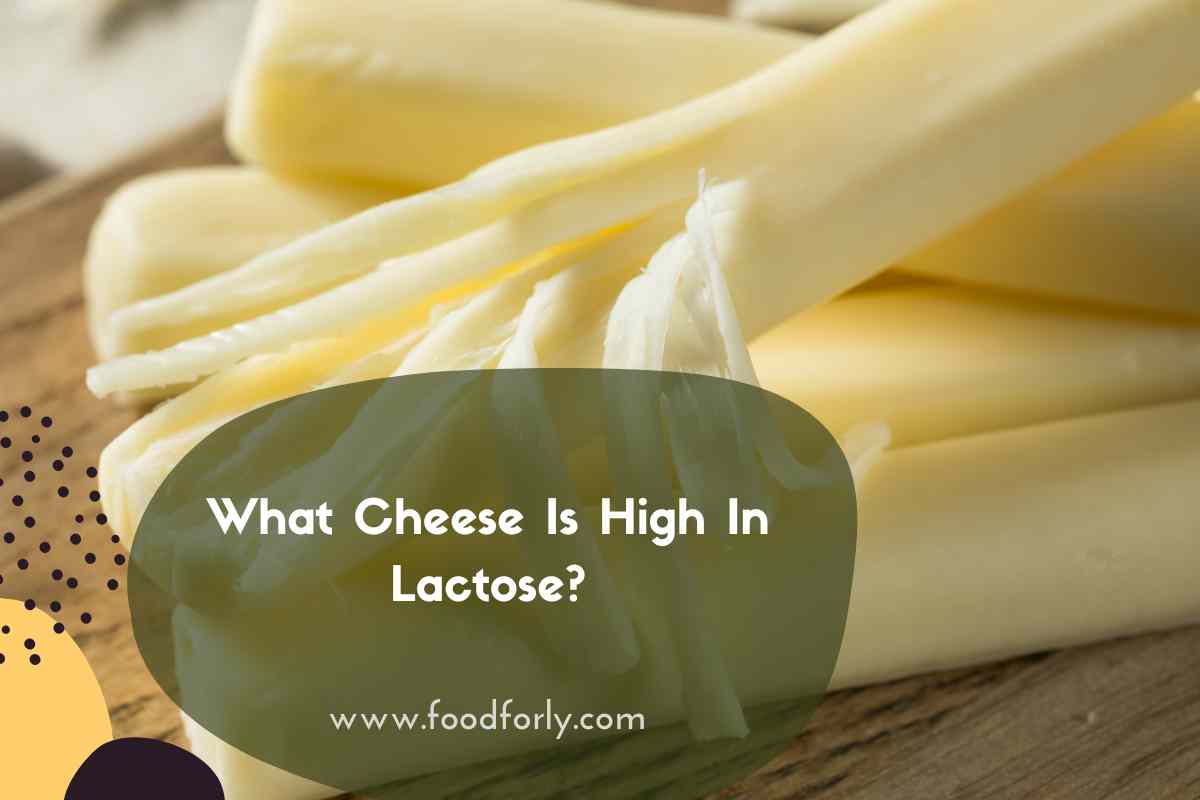What Cheese Is High In Lactose?
What Cheese Is High In Lactose? Cheese is generally low in lactose compared to other dairy products. During the cheese-making process, most of the lactose present in milk is converted into lactic acid by the bacteria used in fermentation. However, the lactose content can vary depending on the type of cheese and the specific manufacturing process.
Fresh cheeses, such as ricotta and cottage cheese, tend to have higher lactose content since they are made with minimal fermentation. These cheeses retain more lactose as compared to aged and hard cheeses. Soft cheeses like brie and camembert may also contain slightly higher lactose levels.
If you are lactose intolerant or have difficulty digesting lactose, it is generally recommended to choose aged or hard cheeses, as they have lower lactose content. Some examples of low-lactose cheeses include cheddar, Swiss, Parmesan, and blue cheese.
What Cheese Is High In Lactose?

However, it’s important to note that lactose tolerance varies among individuals, and some people with lactose intolerance may still be able to tolerate small amounts of lactose-containing foods, including certain cheeses. If you have specific dietary concerns, it’s always best to consult with a healthcare professional or a registered dietitian.
What Cheeses Have The Most Lactose?
Fresh cheeses like ricotta and cottage cheese tend to have higher lactose content compared to other types of cheese.
How Much Lactose In Swiss Cheese?
Swiss cheese typically contains very low levels of lactose, as most of it is converted to lactic acid during the cheese-making process.
The lactose content in Swiss cheese is generally negligible and is considered safe for most individuals with lactose intolerance.
How Much Lactose Does Cheese Have?
The lactose content in cheese can vary depending on the type and manufacturing process. Generally, cheese has low levels of lactose, as most of it is converted into lactic acid during fermentation.
Hard and aged cheeses tend to have the lowest lactose content, while fresh and soft cheeses may contain slightly higher amounts. However, the lactose content in cheese is generally considered negligible and is often well tolerated by individuals with lactose intolerance.
What Cheeses Are High In Lactose?
Fresh cheeses such as ricotta and cottage cheese are generally higher in lactose compared to other types of cheese.
How Much Lactose In Butter?
Butter is produced by churning cream and does not contain significant amounts of lactose. The lactose content in butter is typically very low, as most of it is removed during the butter-making process. People with lactose intolerance can usually consume butter without experiencing adverse effects.
How Much Lactose Is In Cream Cheese?
Cream cheese typically contains a moderate amount of lactose. The exact lactose content may vary slightly depending on the brand and specific manufacturing process. On average, cream cheese contains approximately 2 to 3 grams of lactose per 1 ounce (28 grams).
However, it’s important to note that lactose tolerance can vary among individuals with lactose intolerance, and some may still be able to tolerate small amounts of lactose-containing foods, including cream cheese.
If you have specific dietary concerns, it’s always best to consult with a healthcare professional or a registered dietitian.
What Is Gruyere Cheese?
Gruyère cheese is a type of Swiss cheese that originated in the Gruyère region of Switzerland. It is a firm and creamy cheese made from cow’s milk. Gruyère cheese has a distinctive nutty and slightly sweet flavor with a smooth and creamy texture. It is commonly used for melting and is a popular choice for dishes like fondue, quiches, and sandwiches. Gruyère cheese is also often enjoyed on its own or paired with fruits, bread, and wine.
What Kind Of Cheese Is Gruyere?
Gruyère cheese is a semi-hard cheese made from cow’s milk. It is a type of Swiss cheese.
Does Cheese Have Lactose?
Cheese does contain lactose, but the amount can vary depending on the type of cheese and the specific manufacturing process. During cheese production, most of the lactose in milk is converted into lactic acid by the bacteria used in fermentation.
As a result, aged and hard cheeses generally have lower lactose content compared to fresh or soft cheeses. However, even in aged cheeses, there may still be trace amounts of lactose present.
It’s worth noting that lactose tolerance can vary among individuals with lactose intolerance, and some people may be able to tolerate small amounts of lactose in cheese without experiencing adverse effects.





